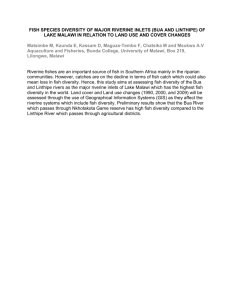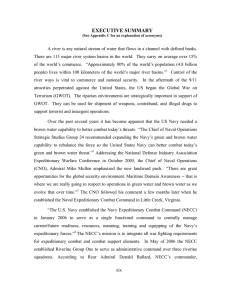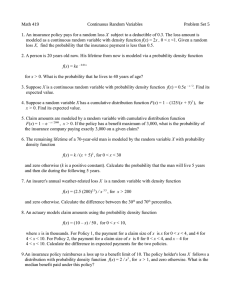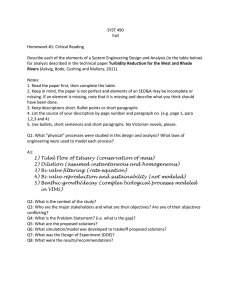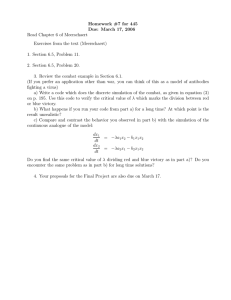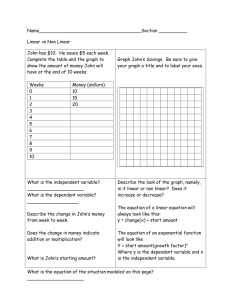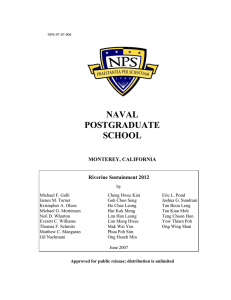EXECUTIVE SUMMARY
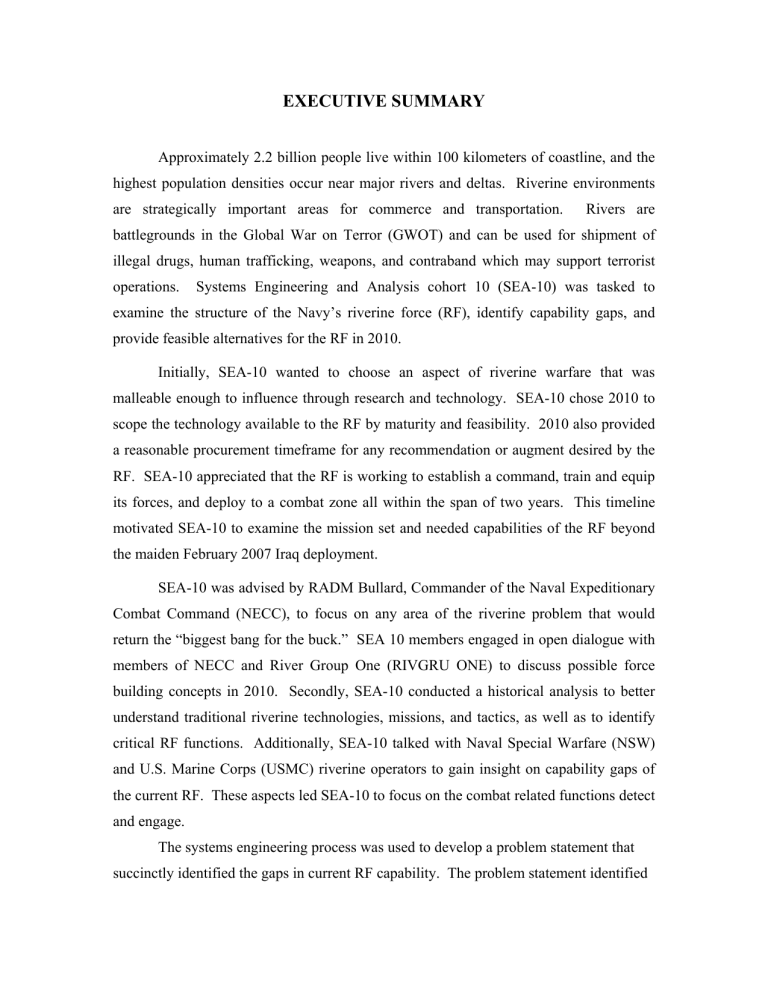
EXECUTIVE SUMMARY
Approximately 2.2 billion people live within 100 kilometers of coastline, and the highest population densities occur near major rivers and deltas. Riverine environments are strategically important areas for commerce and transportation. Rivers are battlegrounds in the Global War on Terror (GWOT) and can be used for shipment of illegal drugs, human trafficking, weapons, and contraband which may support terrorist operations. Systems Engineering and Analysis cohort 10 (SEA-10) was tasked to examine the structure of the Navy’s riverine force (RF), identify capability gaps, and provide feasible alternatives for the RF in 2010.
Initially, SEA-10 wanted to choose an aspect of riverine warfare that was malleable enough to influence through research and technology. SEA-10 chose 2010 to scope the technology available to the RF by maturity and feasibility. 2010 also provided a reasonable procurement timeframe for any recommendation or augment desired by the
RF. SEA-10 appreciated that the RF is working to establish a command, train and equip its forces, and deploy to a combat zone all within the span of two years. This timeline motivated SEA-10 to examine the mission set and needed capabilities of the RF beyond the maiden February 2007 Iraq deployment.
SEA-10 was advised by RADM Bullard, Commander of the Naval Expeditionary
Combat Command (NECC), to focus on any area of the riverine problem that would return the “biggest bang for the buck.” SEA 10 members engaged in open dialogue with members of NECC and River Group One (RIVGRU ONE) to discuss possible force building concepts in 2010. Secondly, SEA-10 conducted a historical analysis to better understand traditional riverine technologies, missions, and tactics, as well as to identify critical RF functions. Additionally, SEA-10 talked with Naval Special Warfare (NSW) and U.S. Marine Corps (USMC) riverine operators to gain insight on capability gaps of the current RF. These aspects led SEA-10 to focus on the combat related functions detect and engage.
The systems engineering process was used to develop a problem statement that succinctly identified the gaps in current RF capability. The problem statement identified
a need for the RF to have a detection and engagement capability beyond visual range.
Brainstorming, research, and consultation with riverine operators led to the generation of eleven alternative force packages developed to potentially satisfy the problem statement.
SEA-10’s mission essential objectives: increase battlespace awareness (key function detect) and increase situational responsiveness (key function engage); were directly associated with entities encompassed within the force packages.
Alternatives were modeled around the most likely (patrol) and most severe
(ambush) scenarios. Scenarios were modeled in MANA, an agent based simulation that accounted for terrain, line of sight, weapons characteristics, personality motivations, and communications capability. Alternative performance parameters were entered into
MANA and modeled against historically feasible opposing forces. Measures of performance such as time to first detection were collected from MANA and detailed statistical analysis was conducted to compare performance of one alternative against another.
SEA-10 conducted an open source cost estimate for each force package.
Procurement and operating and support costs were considered for each alternative over a ten year period beginning in 2010. Each alternative’s overall cost was compared with its performance to determine which alternative would generate the biggest “bang for the buck.”
SEA-10 recommends the following alternatives based on cost estimation and alternative performance in modeled scenarios.
•
The USV was the best option for the price. The organic engagement capability of the baseline RF was sufficient in combating most threats with minimal losses when queued by the USV.
•
The networked mortar team and/or networked mortar barge extended the capability of the baseline force, but at a substantially increased cost.
•
Dedicated helicopter support was by far the most performance enhancing of all the alternative architectures, but was the most costly.
•
Adding only weapon augments to the baseline RF had no significant effect on system performance
•
The addition of the ground combat element produces a measurable improvement in percentage of no hit runs and loss exchange ratio, but when limited to two scenarios (patrol and ambush) it did not significantly improve overall system performance.
